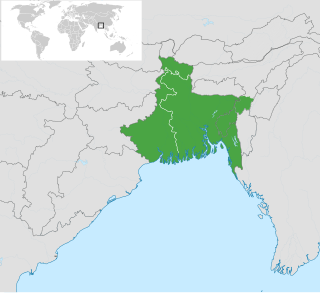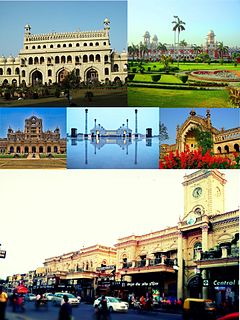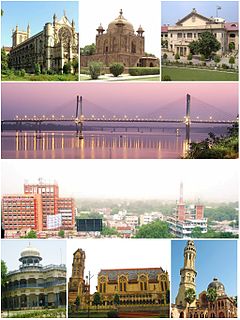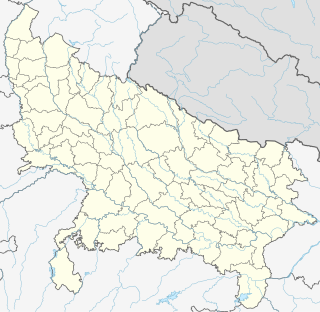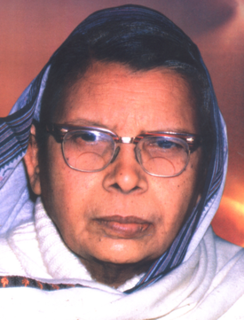
Mahadevi Verma was a Hindi poet, freedom fighter and educationist from India. She is widely regarded as the "modern Meera". She was a major poet of the "Chhayavaad", a literary movement of romanticism in modern Hindi poetry ranging from 1914–1938 and a prominent poet in Hindi Kavi sammelans.

Dharamvir Bharati was a renowned Hindi poet, author, playwright and a social thinker of India. He was the chief editor of the popular Hindi weekly magazine Dharmayug, from 1960 till his death in 1997.
Dr. Dhirendra Verma was a prominent Indian poet and writer. He used to write in Hindi and Brij Bhasha. Verma holds the same prominence for introducing scientific methods to research in Hindi language and literature as does Ramchandra Shukla. On the basis of his research in Indian languages, he published the first scientific history of Indian languages in 1933. He wrote his doctoral thesis on Brij Bhasha in French which was later translated into Hindi.

Gajanan Madhav Muktibodh was one of the most prominent Hindi poets, essayist, literary and political critic, and fiction writers of the 20th century. He also remained assistant-editor of journals like, Naya Khun and Vasudha etc.
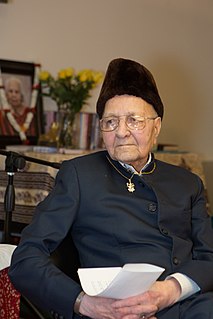
Gulab Khandelwal was an Indian poet who wrote poetry in different forms such as Lyrics, Sonnets, Rubais (Quatrains), Dohas (Couplets), Odes, Elegies, Lyrical Ballads, Epics, Poetic Dramas, Ghazals, and Masnavi with equal felicity. He even introduced some of these forms into Hindi literature and, apart from Hindi, has also written poetry in Urdu and English. The span of his poetic language touches upon Sanskrit on one end and Urdu on the other. Gulab Khandelwal died in Ohio on 2 July 2017.
Dr. Ram Ratan Bhatnagar was a Hindi scholar, professor in the Hindi Department at the University of Sagar, writer and critic of Hindi literature and poetry.
Narendra Mohan is an eminent Hindi poet, playwright and critic, who also writes in Punjabi.
Kunwar Narain was a poet in Indian literature, often regarded as the leading poet in Hindi. He read and traveled widely and wrote for six decades. He was linked to the New Poetry movement.

Ram Vilas Sharma was an eminent progressive literary critic, linguist, poet and thinker. He was born in Unchgaon Sani, Unnao District, Uttar Pradesh.

Dushyant Kumar was a poet of modern Hindi literature. He is famous for writing Hindi Ghazals, and is generally recognised as one of the foremost Hindi poets of the 20th century.

Munawwar Rana is a modern Urdu poet.
Upender Nath Sharma Ashk, was an Indian novelist, short story writer and playwright. He was born in Jalandhar, Punjab. In 1933 he wrote his second short story collection in Urdu called Aurat Ki Fitrat, the foreword of which was written by Munshi Premchand. Ashk began his literary career writing in Urdu but he switched to Hindi on the advice of Munshi Premchand. He joined All India Radio in 1941 where Krishan Chander, Patras Bokhari and Saadat Hasan Manto were among his colleagues. He settled in Allahabad in the late 40's. He was the first Hindi dramatist to receive the Sangeet Natak Akademi Award for playwriting in 1965.
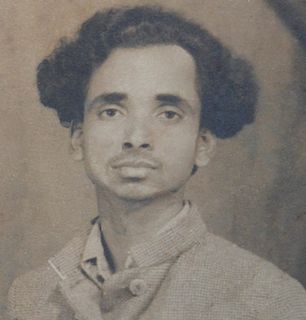
Ramesh Chandra Jha was an Indian poet, novelist and freedom fighter. Son of a senior gandhian Lakshmi Narayan Jha, who was offered to become the first chief minister of bihar but refused as he called himself a freedom fighter then a politician. Ramesh Chandra Jha's poems, ghazals and stories evoke patriotism and human values. Romanticism and struggle of life are also important aspects of his writing. His poetry expresses concerns of people's life struggle, their dreams and hopes.
Leeladhar Jagudi is an Indian teacher, journalist and poet of Hindi literature. He is the author of several poetry anthologies including Natak Jari Hai and Shankha Mukhi Shikharon Par and is a recipient of the Sahitya Akademi Award, for his 1997 anthology, Anubhav Ke Aakash Mein Chand. The Government of India awarded him the fourth highest civilian honour of the Padma Shri, in 2004, for his contributions to Hindi literature.
Thakur Srinath Singh (1901-1996) was a renowned Indian poet, known for his poems for children such as Nani Ka Sndook, Makkhi Ki Nigah. He edited Saraswati (magazine), Sishu, Balsakha, Hal. He published magazines for women and children like Didi, Balbodh. He wrote many books for children like Bal kavitavali, Pipehary & Khelghar, Balbharti, Paridesh ki sair, Sunehry nadi ka devta,Prithvi ki kahani, Avishkaron ki katha. He contributed his efforts in Hindi literature by writing novels such as Jagran, Uljhan, Prajamandal, Prem parikcha, Kchma, Ek aur anek, Kavi aur Krantikari, Streedarpan, Grahsth Jeevan, Yovan Prem aur Saundrya, Somnath, Radharani.
In 1917, he went to Pune to join British army for participation in World War 1. However, due to some reasons he returned to Allahabad and started his career as a writer and editor in 1920 with Grehlakshmi and Shishu published by Pt.Sudarshanacharya and his wife Smt.Gopal Devi from Allahabad.. He took active participation in nationalistic movement of India.
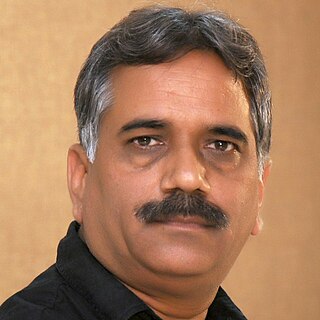
Pawan Karan is an Indian poet, columnist, editor, social and political analyst and “one of the major poets of early 21st century”.He is highly regarded for his realistic depiction of women's life in Indian society. Apart that his poems written against subjects like imperialism, capitalism, religion fanatics, social beliefs of caste based society and orthodox customs are highly appreciated as well, because of them he constantly becomes a target of religious fanatics, orthodox social view and politics and long-established norms of Indian society.
Doodhnath Singh was an Indian Hindi language writer, critic and poet. Born in Ballia district of Uttar Pradesh, Singh studied Hindi at the University of Allahabad and served as an assistant professor there until 1994. In 2014, the government of Uttar Pradesh honoured him with their Bharat Bharti Samman.
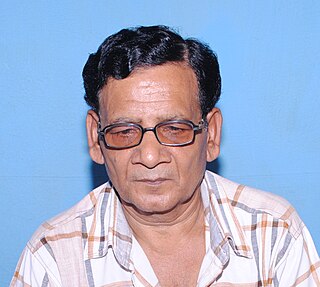
Rameshraj Tewarikar Hindi is a scholar, poet. He is famous for his distinctive talent in the area of Satire and Rasa, and they are one of the major scholars who develop the Tewari and Rasa tradition of poetry.
Sushil Siddharth was a Hindi prose and poetry writer, critic, editor and satirist. He was a journalist and columnist and the co-editor of several periodicals. He was awarded the Madhuban Vyanga Shri Samman in 2017 for his satirical works.


